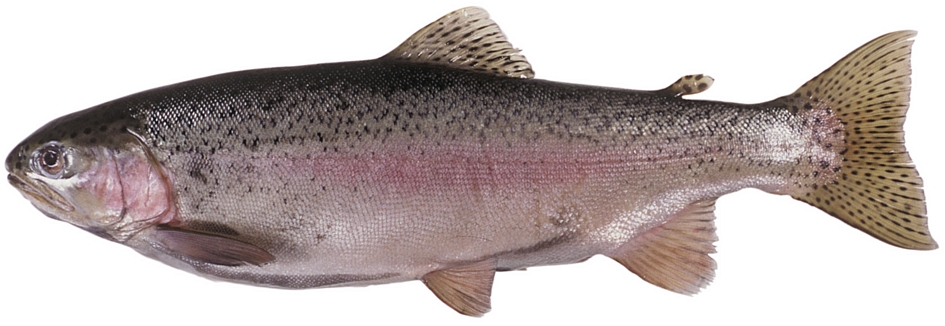
Rainbow Trout: Now that is one good looking fish. However, it is not a native of Australia and along with its cousin, the Brown Trout, has caused a lot of environmental damage.
Rainbow trout are native to North America and were introduced to New South Wales from New Zealand (where thay had been previously established) in 1894. Then introduced to Victoria and Tasmania.
Trout have been implicated in the decline of several native fish species as well as the spotted tree frog.
Inhabits cold headwaters, creeks, small to large rivers, and lakes. Stocked in almost all water bodies as lakes, rivers and streams, usually not stocked in water reaching summer temperatures above 25°C or ponds with very low oxygen concentrations. Feeds on a variety of aquatic and terrestrial invertebrates and small fishes. At the sea, preys on fish and cephalopods. Undertakes short spawning migrations. Used fresh, smoked, canned, and frozen; eaten steamed, fried, grilled, boiled, microwaved and baked. Cultured in many countries and is often hatched and stocked into rivers and lakes especially to attract recreational fishers.
Some Trout science from Wikipedia: As rainbow trout grow, they lengthen and increase in mass. The relationship between length and mass is not linear. The relationship between total length (L, in inches) and total mass (W, in pounds) for steelhead and nearly all other fish can be expressed by an equation of the form:
The factor b is close to 3.0 for all species, and c is a constant that varies among species. For lentic rainbow trout, b = 2.990 and c = 0.000426, and for lotic rainbow trout, b = 3.024 and c = 0.000370.
The relationship described in this section suggests a 33 cm lentic rainbow trout weighs about 0.45 kg, while an 46 cm lentic rainbow trout weighs about 1.1 kg.
Mmmm..Not sure what all that means, but I do know they taste nice.



13th January 2012 at 3:15 pm
Where’s the recipe?
13th January 2012 at 3:19 pm
Grilled on a campfire.